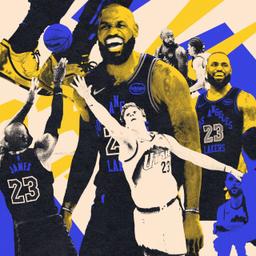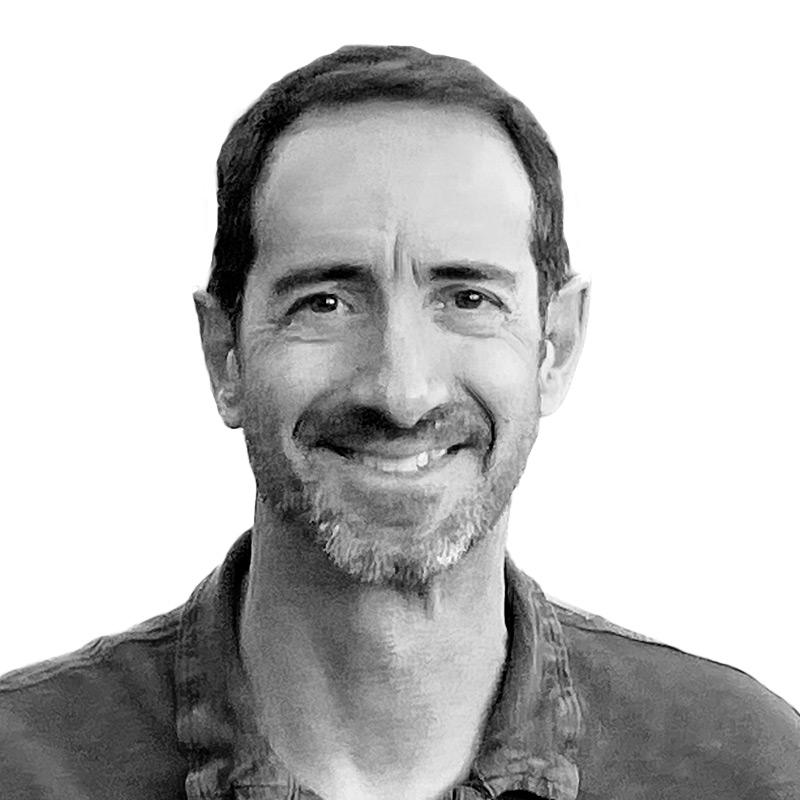In early 1987, after the 51st game of his 18th NBA season, Kareem Abdul-Jabbar took his customary spot in the visitors’ locker room at the Spectrum and braced for a media horde that never did arrive.
Abdul-Jabbar was 39, but still a towering figure in absolutely every sense. He’d led the Los Angeles Lakers to the Western Conference finals the prior season, averaging nearly 26 points along the way. He’d placed fifth in the league MVP voting that spring, and was voted to the All-NBA first team. He was a six-time MVP, a four-time champion, and certified NBA royalty—by many measures, the GOAT (even if that term was not yet in vogue).
But on this Sunday afternoon in Philadelphia, where the Lakers had just defeated the 76ers in overtime, in one of the country’s biggest media markets, Abdul-Jabbar sat unbothered—“virtually ignored,” according to an account in The New York Times. When the Times reporter pointed this out, Abdul-Jabbar responded with a verbal shrug.
“I’m less a part of the focus than I was in the past,” Abdul-Jabbar said, “but that’s the nature of sports.” The Lakers’ offensive identity—and presumably the attention of the gathered media—had shifted definitively to Magic Johnson, who at age 27 was in the midst of an MVP campaign.
A torch-passing of sorts was happening in real time, for all the world to see.
This past Tuesday in Los Angeles, after the first game of his 23rd season, another figure of certified NBA royalty took his customary spot in the Lakers’ home locker room after a win … and was quickly engulfed by two dozen reporters, columnists, TV camera operators and other assorted phone-wielding interrogators. Never mind that he’d had, by his standards, a ho-hum game statistically against the Utah Jazz, or that the real star of the game was his box score–stuffing young co-star, Luka Doncic; LeBron James remained the prime attraction.
“It was just fun to be out there with the guys, man,” James said following a season debut that came four weeks late due to a bout of sciatica.
Like Abdul-Jabbar in his time, James has stretched, indeed shattered, any accepted boundaries for what an aging athlete can do. Last spring, he became the first 40-year-old to earn All-NBA honors. He finished sixth in league MVP voting. He’s now just weeks away from his 41st birthday, yet by the looks of his performance Tuesday—an effortless 11 points and 12 assists in 29 minutes—he won’t be fading away anytime soon, in the box score or from our collective consciousness.
The speed and power? Still there. The defense-bending bursts into the lane? Still there. The 3-point stroke? Still there. The no-look, pinpoint bullet passes that leave teammates’ palms stinging and defenders demoralized? Yeah, still there. Even on a night where he shot sparingly (four baskets on seven attempts) and deferred often (to Doncic), James’s impact was profound and his presence immense.
Now, as ever, LeBron commands the room, the league, the discourse, even if he is now—and damn, does this feel strange to type—just the second-best player on the roster. In so many ways, the Lakers are still LeBron’s team, but they will only go as far this season as the 26-year-old Doncic can take them. And, as it was in the late ’80s, the Lakers’ ultimate success might once again depend on how much control an aging legend is willing to cede to a younger superstar.
“I can fit in with anybody,” an indignant James told reporters Tuesday night. “I don’t even understand why that was a question.”
But with NBA legends, and James in particular, it’s never as simple as merely fitting in. It’s about pride and ego and legacy. It’s about touches and shots and control of the offense. It’s about how elite athletes see themselves, and how they want us to see them, even as their beards gray and their spotlights dim.
Michael Jordan, at age 39, took 300 more shots than any Wizards teammate, even as his field goal percentage plummeted to career-low levels. Kobe Bryant, with nothing to play for and no teammates he trusted, did the same in his age-37 season, while making a ghastly 36 percent of his shots. Others have bowed out more gracefully, serving as role players and mentors in their twilight: Tim Duncan, Dirk Nowitzki, Vince Carter. And some have simply broken down as they hobbled toward the horizon: Shaquille O’Neal, Allen Iverson, Dwight Howard.
Few NBA superstars make it to age 39 or beyond. Only a handful retain some semblance of their powers. And fewer still have the good fortune to be paired with a much younger superstar—not just a great player, but a burgeoning legend in their own right—who can ensure they’re still relevant in the spring. In fact, the overlap in this Venn diagram is as thin as the stripes on a basketball.
Kareem had Magic. LeBron has Luka. That’s it. That’s the list.
The parallels are not perfect—Kareem and Magic had been together for years; LeBron and Luka, for mere months—but the Lakers of the late ’80s provide as close to a blueprint as you can get for the Lakers of the mid-2020s. And Kareem’s thoughts back then might provide at least a glimpse into what LeBron is confronting today: the reality that it’s time for someone else to run the show, and to carry the burden.
Through his first seasons with Magic , Abdul-Jabbar had been the clear hub of the Lakers offense, dominating the paint and the scoreboard while the pass-happy Johnson served as master orchestrator. But after getting crushed by Houston in the 1986 conference finals, coach Pat Riley spent the offseason revamping the offense, a plan he presented in training camp: Magic would take center stage, with Kareem playing a secondary role for the first time.
Sure enough, Johson’s shots per game leaped to a career-high 16.4 in the 1986-87 season (up from 12.8), and his usage rate leaped from 21.6 to 26.3; Abdul-Jabbar’s shot attempts per game dipped precipitously, from 16.9 in 1985-86 to a career-low 13 in 1986-87, while his usage dropped from 26.6 to 22.1. It was a stark role reversal—one that was sold as a mere shift in strategy after the loss to Houston, but was clearly a concession to age.
By his own account, Kareem embraced the shift.
“I saw the change as a positive move for both the team and me,” he wrote in his 1990 autobiography, Kareem. “I've never had to be, or wanted to be, the only one on the mountaintop. I have never had any problem sharing. It lifted a burden off. That year, the 1986-87 season, turned out to be the easiest year I had in the NBA. I was still strongly involved in the offense, but not carrying the primary load, and I had everything to give when I was needed.”
The new offense, and Abdul-Jabbar’s adaptability, indeed paid off as the Lakers—powered by Magic’s 26 points per game and his all-around dynamism—took down the mighty Boston Celtics in the 1987 Finals for their fourth championship of the decade. They repeated as champs in 1988 (beating Detroit) and made the Finals again in 1989 (losing to Detroit) in Abdul-Jabbar’s farewell season. If Abdul-Jabbar had bristled at the reduced role, if he’d led with his ego, maybe he never wins those final two rings. Maybe his legacy takes a massive hit. Maybe we view his twilight years much differently.
But it wasn’t all rainbows and sunshine and Larry O’Brien trophies. As Abdul-Jabbar wrote, he “began to feel the downside of my reduced role,” because on some nights the Lakers still needed him to dominate. “It was as if I were a first tenor who'd agreed to sing in the chorus, then was asked to sing first tenor again and whose chops, accordingly, weren't right there. … So last season became a tough one for me.” Instead of a mere tactical change, he wrote, it started to feel “more and more like planned obsolescence.”
And therein lies both the challenge and the opportunity for LeBron James as he navigates his record-setting 23rd season, and his eighth in L.A. He remains indisputably elite (ranked 11th in the Ringer 100) as a scorer, passer, and orchestrator, even as his defense has steadily eroded. But Doncic is now the better player, by just about every metric, and by virtue of his age alone more suited to play the lead role on a nightly basis.
And then there’s the contractual elephant in the room: James is in the final year of his deal. He wasn’t offered an extension last summer, a fact that—coupled with the Lakers’ shift to Luka’s timeline—clearly perturbed James and his agent Rich Paul. His future beyond this season is unclear.
Which brings us to the most critical question of the Lakers’ season: Just how much is James willing to sacrifice at age 41, given that he’s still better than most 31-year-olds? How much control is he willing to cede to Doncic, who just became his teammate—and his successor as face of the franchise—nine months ago?
LeBron’s own past offers only hazy guidance. In his prime, James moved to Miami to join his friend Dwyane Wade’s team, initially as virtual equals. But over four seasons, James would become the Heat’s undisputed leader, especially in the postseason. During his second tour with Cleveland, James sometimes shared the offense with Kyrie Irving and sometimes thoroughly overshadowed him—to the point that Irving demanded a trade after three years, despite winning a title together.
When the Lakers acquired Anthony Davis in 2019, James anointed him the no. 1 option—a declaration he would repeat almost annually for a half decade—but James still led the team in usage every year until their final half-season together, just before the team swapped Davis for Doncic.
Things are different now. James is that much older, that much closer to retirement. Doncic, unlike Davis, can do all the things that James does, as a point guard in the body of a power forward. And the Lakers have a third player with elite scoring and ballhandling skills, the 27-year-old Austin Reaves, who’s playing like an All-Star. The Lakers went 10-4 before James returned. They’ve established a winning formula that James, arguably, just needs to fit into—rather than insisting on his style or his prime-years usage rate. It’s not that the Lakers need less LeBron, just a less all-consuming LeBron.
In truth, even the best, most optimized version of this Lakers team probably isn’t good enough to take down the Oklahoma City Thunder, or even to knock out the Denver Nuggets. LeBron can follow Kareem’s blueprint, but he can’t ensure the same results; championships in this league are never guaranteed. But a decision to blend, rather than impose, his talents could give the Lakers their best chance at a deep playoff run.
If ever there was a time for James to take a step back, to lean on his co-stars and reduce his own load, to sacrifice production while preserving his own health, to finally, definitively (and even enthusiastically) cede some of the spotlight, it’s now. The question is: Will he?



